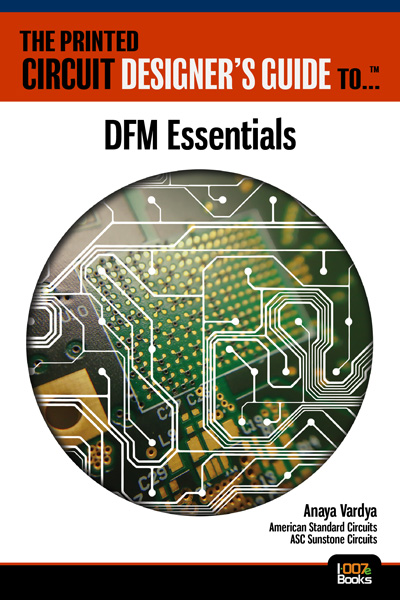-

- News
- Books
Featured Books
- design007 Magazine
Latest Issues
Current Issue
Power Integrity
Current power demands are increasing, especially with AI, 5G, and EV chips. This month, our experts share “watt’s up” with power integrity, from planning and layout through measurement and manufacturing.

Signal Integrity
If you don’t have signal integrity problems now, you will eventually. This month, our expert contributors share a variety of SI techniques that can help designers avoid ground bounce, crosstalk, parasitic issues, and much more.

Proper Floor Planning
Floor planning decisions can make or break performance, manufacturability, and timelines. This month’s contributors weigh in with their best practices for proper floor planning and specific strategies to get it right.
- Articles
- Columns
- Links
- Media kit
||| MENU - design007 Magazine
AI Demand Stands Out While Consumer Electronics Face Tariff Headwinds; 2H25 MLCC Peak Season at Risk
July 30, 2025 | TrendForceEstimated reading time: 2 minutes
The U.S. government plans to impose steep retaliatory tariffs starting August 1st, including up to 30% on imports from Mexico, 15% on the EU, and 15–36% on key tech hubs in Asia such as Japan, South Korea, Thailand, and Malaysia. With U.S. consumer spending growth revised down to just 0.5% in Q1—the lowest since the pandemic—TrendForce notes that the effects of front-loaded demand and stockpiling ahead of tariffs are fading. This casts uncertainty over the traditional back-to-school peak season in Q3, with MLCC order momentum clouded as a result.
TrendForce projects that the second half of 2025 is expected to see a clear split in demand. Orders for mid- to low-end consumer electronics like smartphones, notebooks, and tablets are projected to remain flat or grow just around 5% in Q3, as ODMs take a more conservative approach and avoid traditional peak-season strategies. Many vendors also rushed shipments in 1H25 to avoid tariffs, effectively cannibalizing demand from the latter half of the year.
In contrast, AI server demand remains red-hot. Major ODMs like Foxconn, Quanta, and Wistron saw a boost in May and June revenues with NVIDIA’s GB200 and GB300 platforms both ramping up shipments in Q3. MLCC stocking demand has jumped nearly 25% QoQ, especially for mid- and high-end consumer-grade MLCCs, benefiting suppliers such as Murata, Samsung, and Taiyo Yuden.
Polarization in utilization rates makes capacity and inventory management critical
The disparity in market demand has led to significant differences in MLCC supplier utilization rates. TrendForce’s July survey shows that Japanese and Korean suppliers focusing on high-end AI applications are operating at around 90% capacity. Chinese suppliers are at approximately 75%, while Taiwanese firms have dropped to around 60%. This reflects widespread caution within the supply chain, with strict control over both capacity and inventory in response to market uncertainties.
Amid mounting tariff pressure, MLCC suppliers are accelerating the setup of backend testing and packaging lines in Southeast Asia to enable localized production and mitigate the risk of punitive U.S. tariffs targeting origin mislabeling. TrendForce expects that under sweeping retaliatory tariffs, OEMs will be forced to restructure bids and spread the tariff burden across the supply chain, including materials providers, ODMs, logistics firms, advertising partners, and distributors.
Ultimately, this could result in higher end-product prices. As OEMs begin releasing 2026 RFQs for smartphones and notebooks in the second half of the year, the entire supply chain is bracing for intense tariff-related cost pressure and further margin compression.
Testimonial
"The I-Connect007 team is outstanding—kind, responsive, and a true marketing partner. Their design team created fresh, eye-catching ads, and their editorial support polished our content to let our brand shine. Thank you all! "
Sweeney Ng - CEE PCBSuggested Items
Nolan’s Notes: Is Mexico the Pulse of Electronics in the Americas?
11/04/2025 | Nolan Johnson -- Column: Nolan's NotesLast year, I attended SMTA Guadalajara, where I saw the results of the Mexican investment in electronics manufacturing. The U.S. was still operating under the Biden administration, and while Mexican EMS companies had expanded capacity to support EV manufacturing, the demand dropped significantly. In my conversations at the show, the sentiment was one of patience. They knew the EV business would likely come back. However, they didn’t expect an overhaul of U.S. trade agreements and tariffs that would shift a more diversified portfolio in Mexico’s direction.
2H25 Foundry Utilization Exceeds Expectations, Some Players Are Prepared for Price Hikes
10/16/2025 | TrendForceTrendForce’s latest investigations have revealed that wafer foundry utilization during the second half of 2025 has remained more resilient than anticipated. Several factors are contributing to this, including the postponed U.S. semiconductor tariffs, low inventory at IC vendors, the peak smartphone season, and ongoing high demand for AI.
Nolan’s Notes: Tariffs, Technologies, and Optimization
10/01/2025 | Nolan Johnson -- Column: Nolan's NotesLast month, SMT007 Magazine spotlighted India, and boy, did we pick a good time to do so. Tariff and trade news involving India was breaking like a storm surge. The U.S. tariffs shifted India from one of the most favorable trade agreements to the least favorable. Electronics continue to be exempt for the time being, but lest you think that we’re free and clear because we manufacture electronics, steel and aluminum are specifically called out at the 50% tariff levels.
SIA Statement on Semiconductor Tariffs Announcement
08/27/2025 | SIAThe Semiconductor Industry Association (SIA) released the following statement from SIA President and CEO John Neuffer regarding President Trump’s semiconductor tariff announcement.
The Government Circuit: Navigating New Trade Headwinds and New Partnerships
08/25/2025 | Chris Mitchell -- Column: The Government CircuitAs global trade winds continue to howl, the electronics manufacturing industry finds itself at a critical juncture. After months of warnings, the U.S. Government has implemented a broad array of tariff increases, with fresh duties hitting copper-based products, semiconductors, and imports from many nations. On the positive side, tentative trade agreements with Europe, China, Japan, and other nations are providing at least some clarity and counterbalance.


